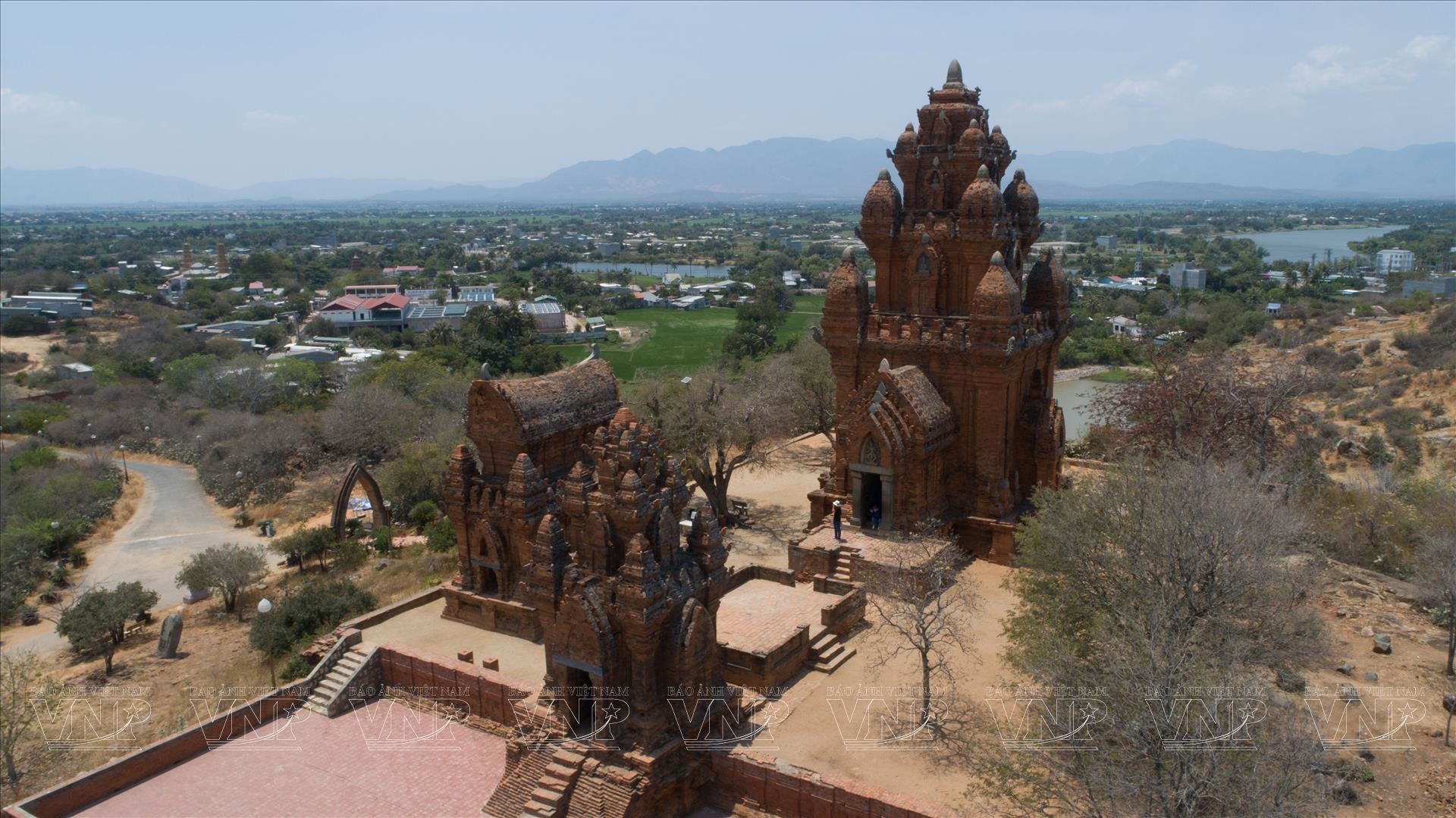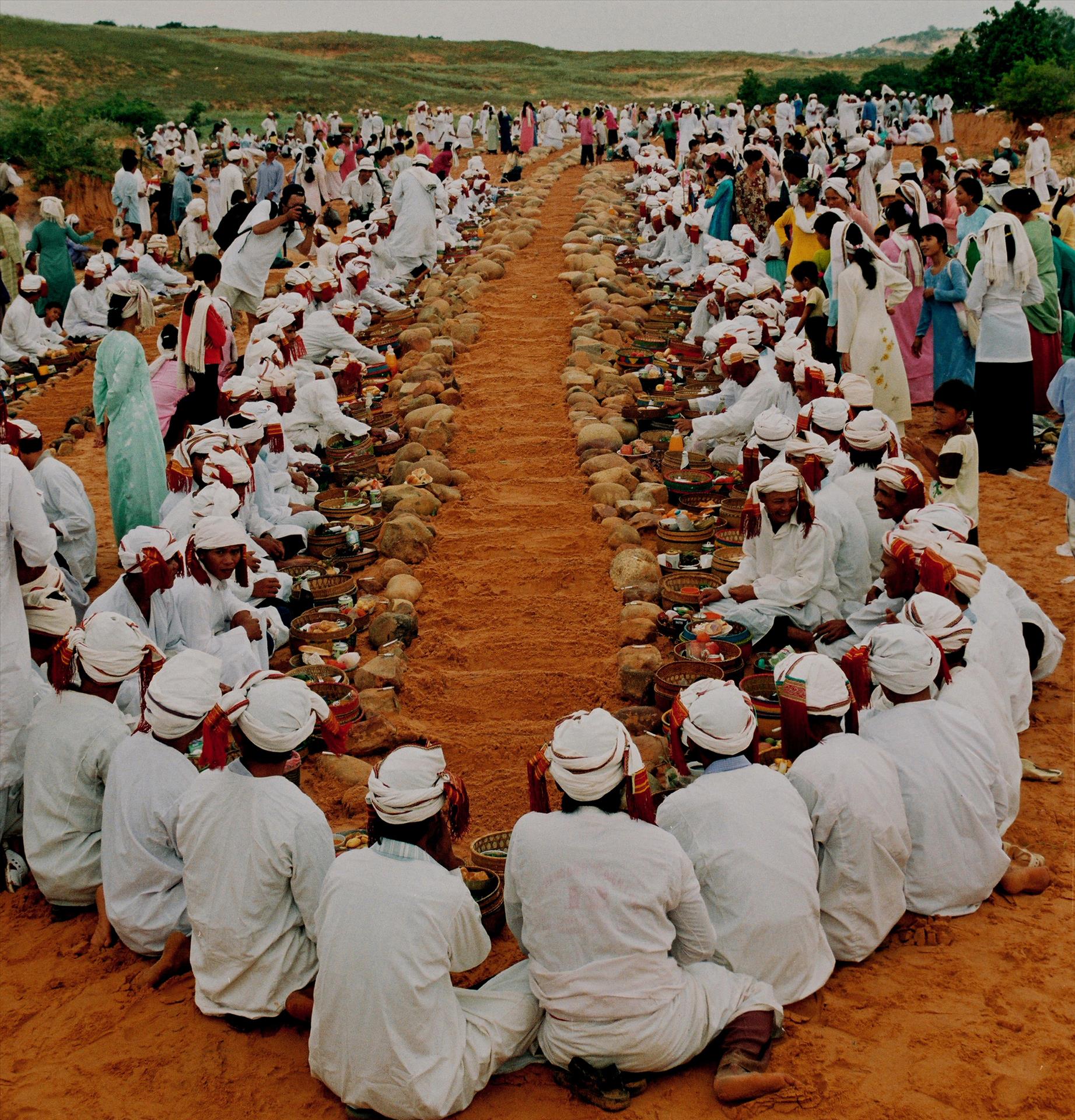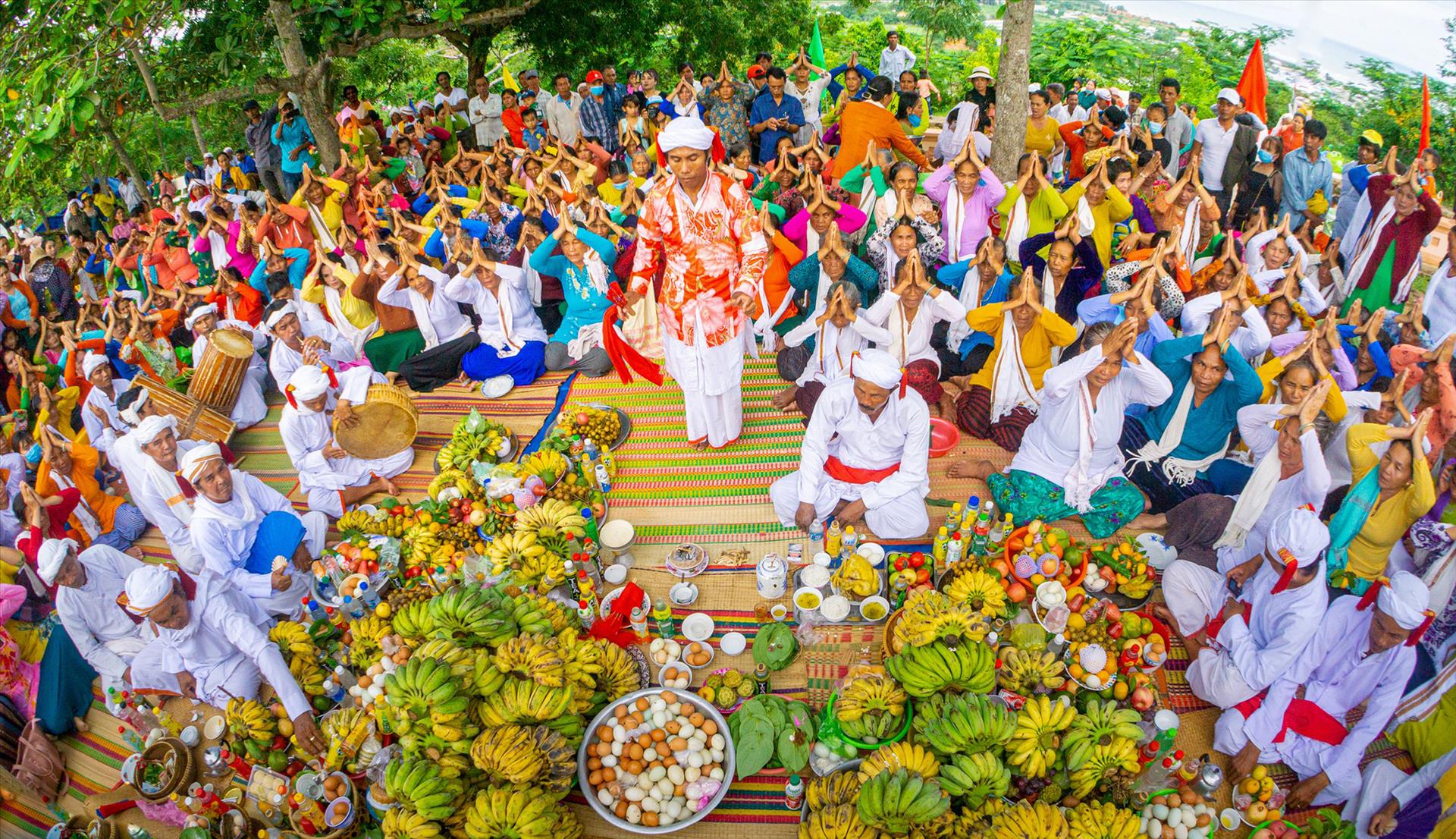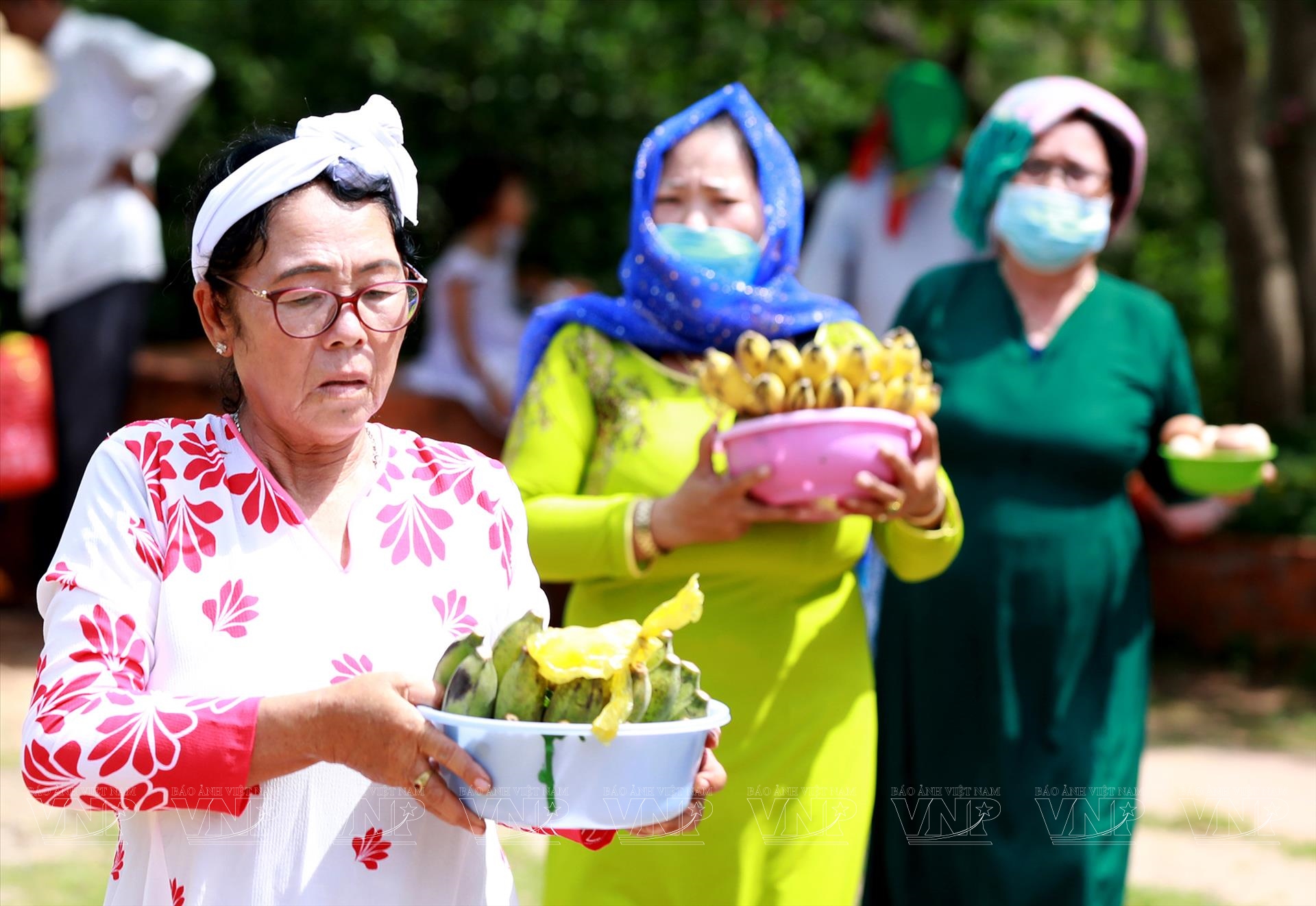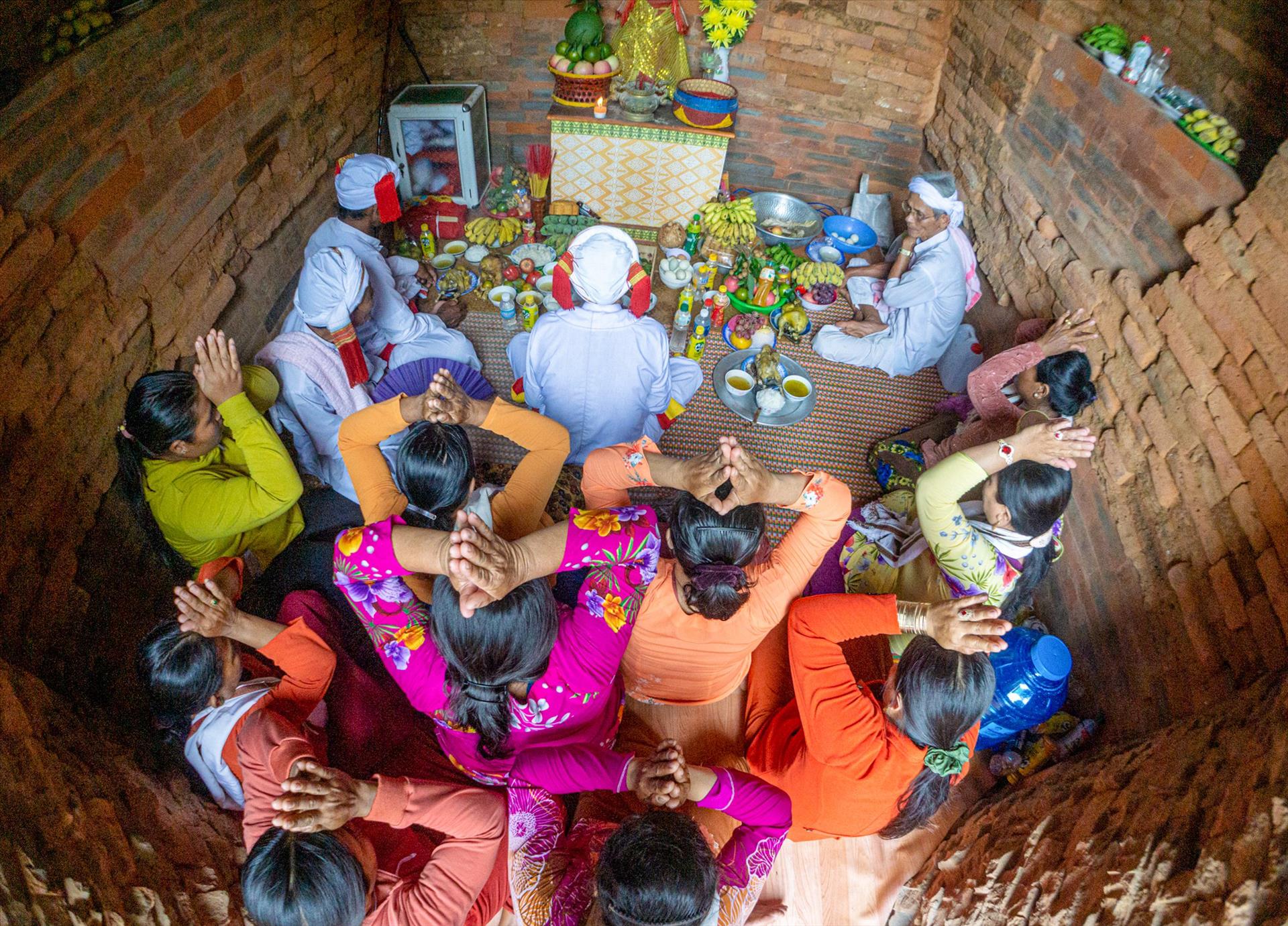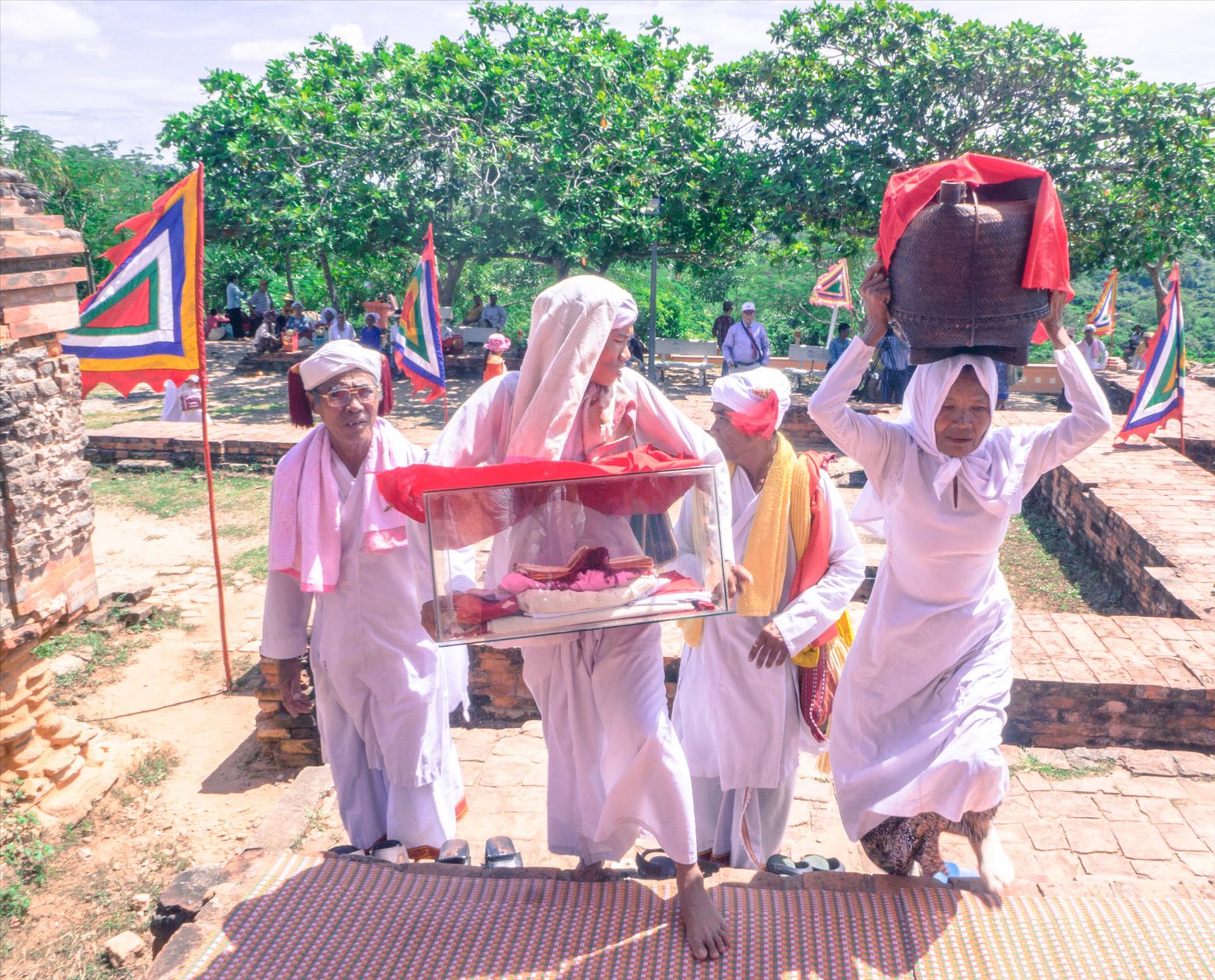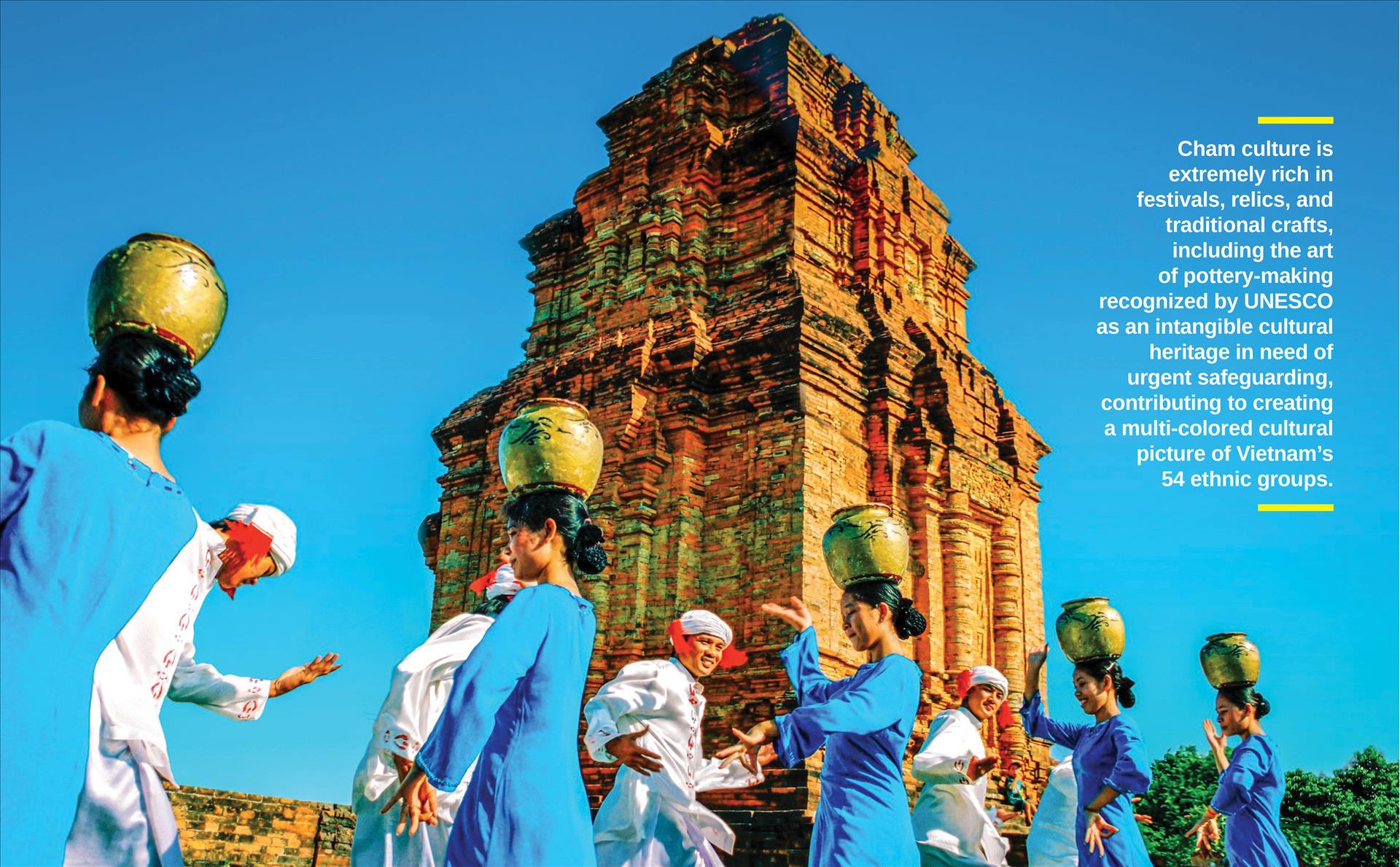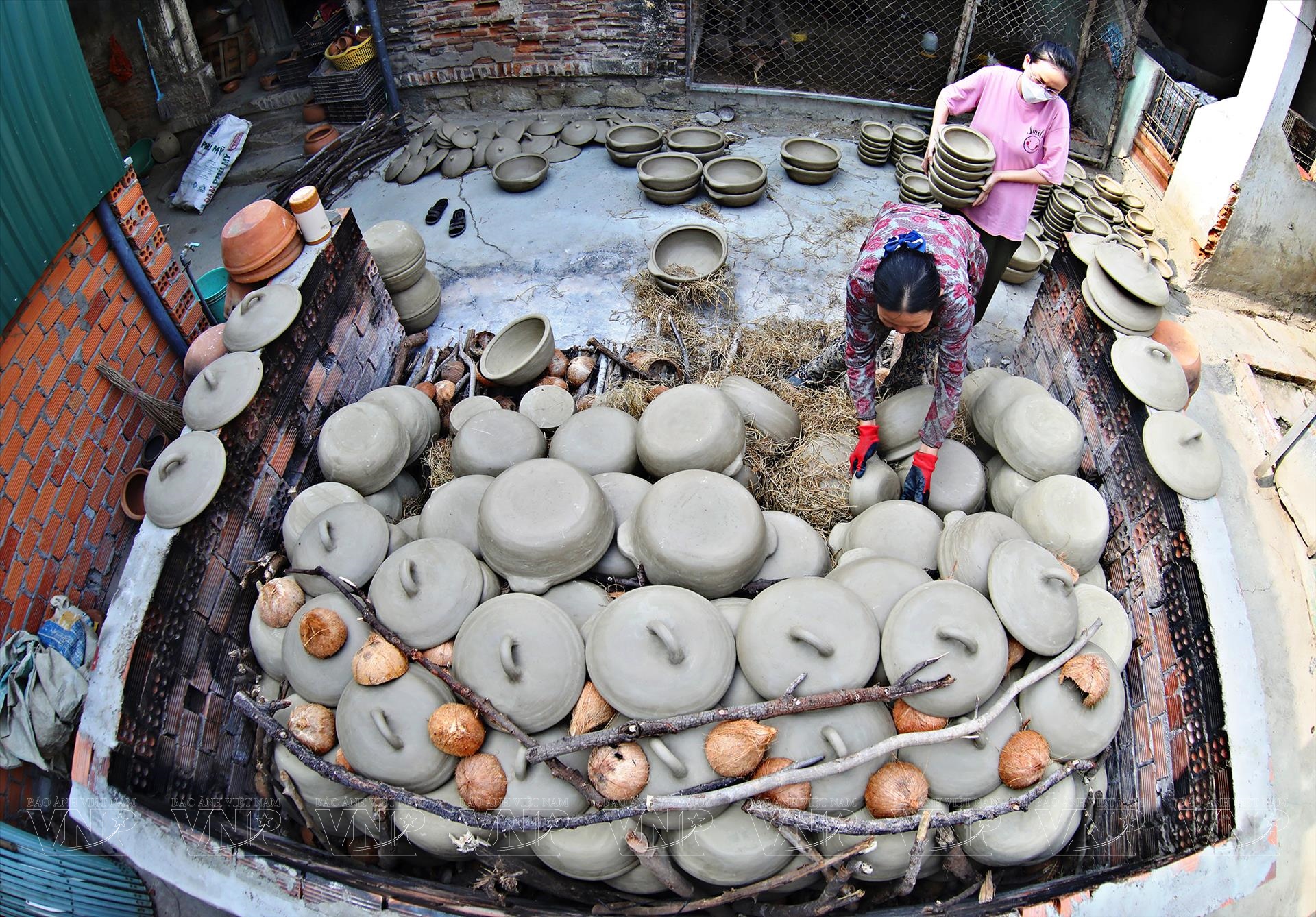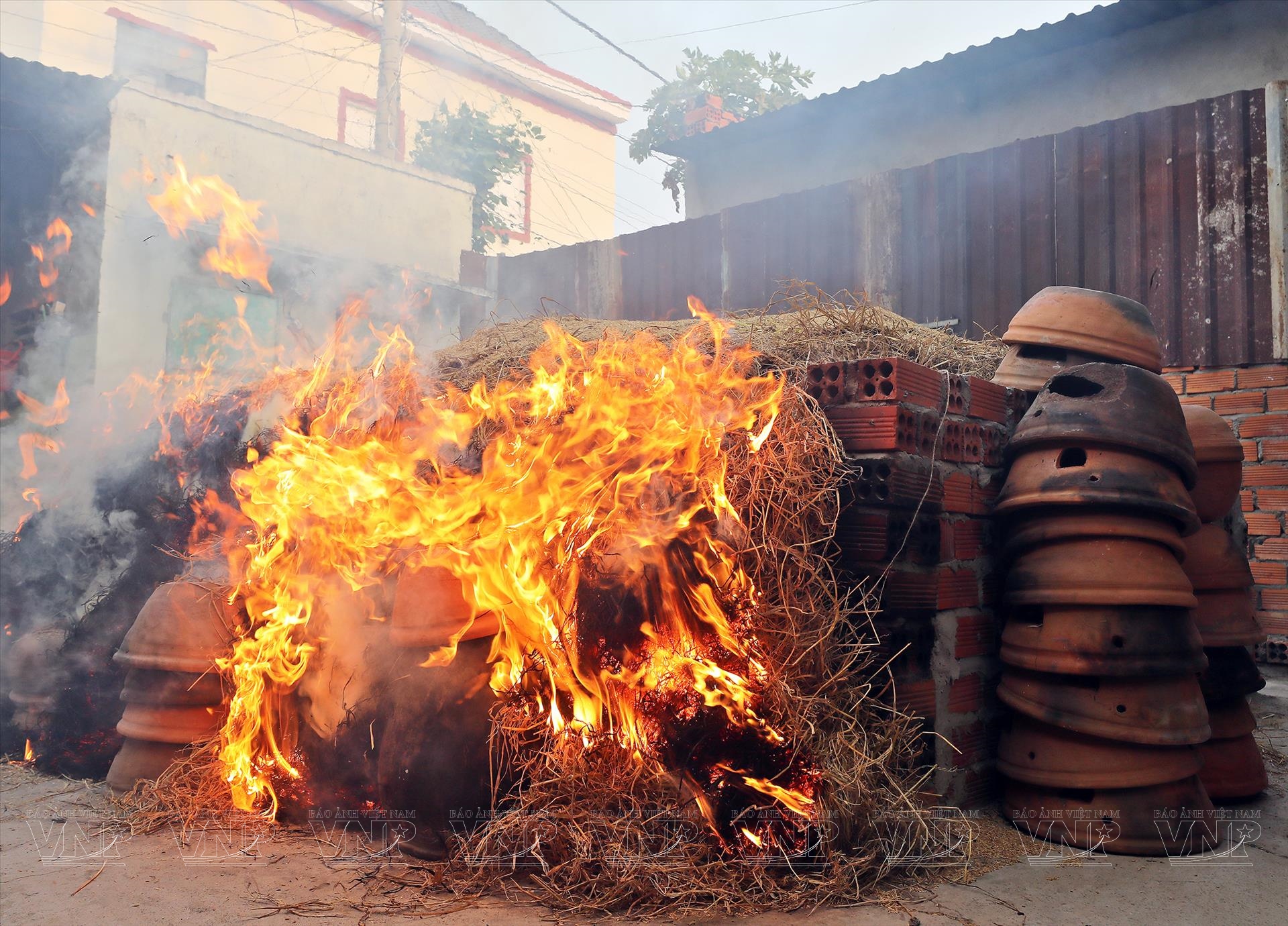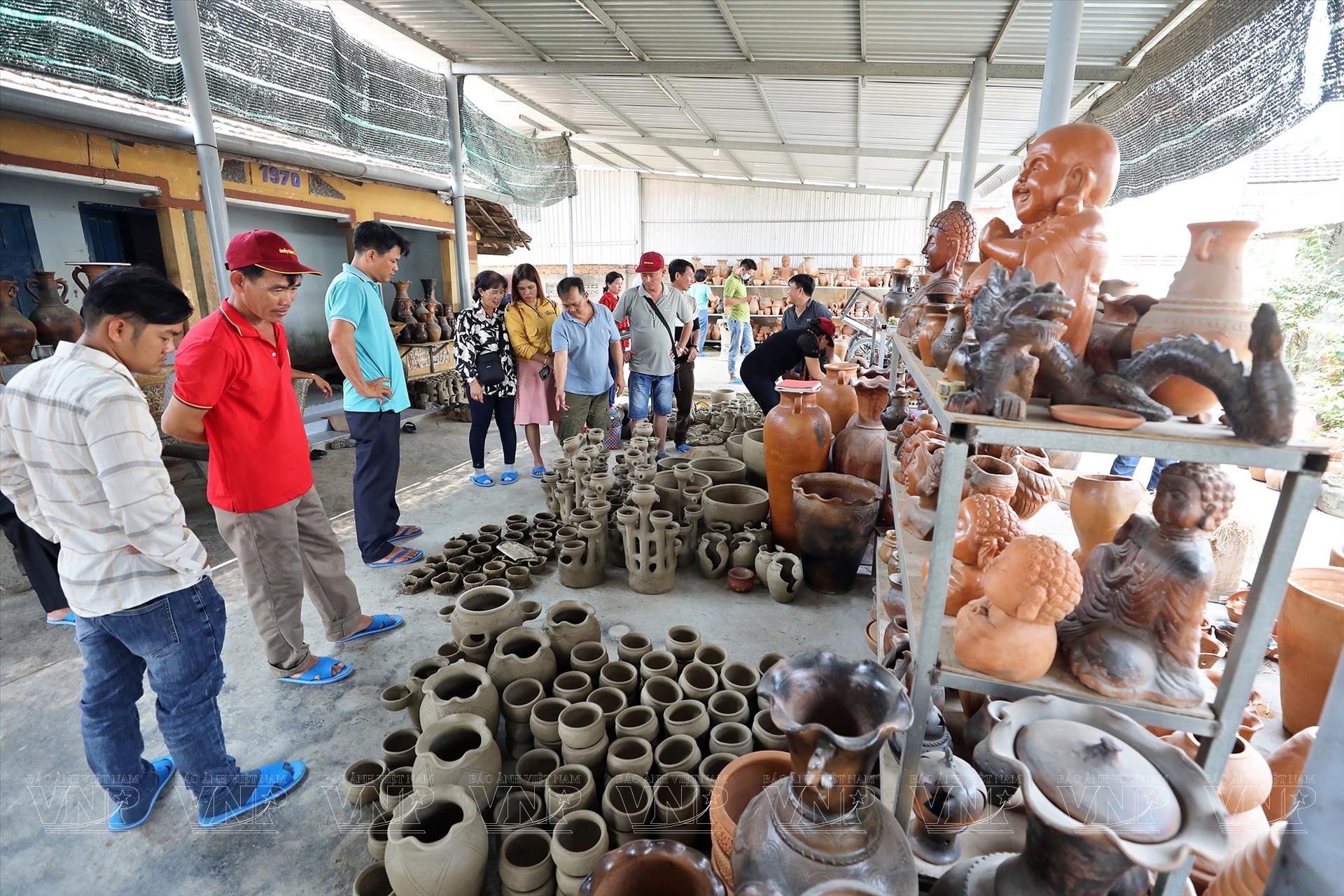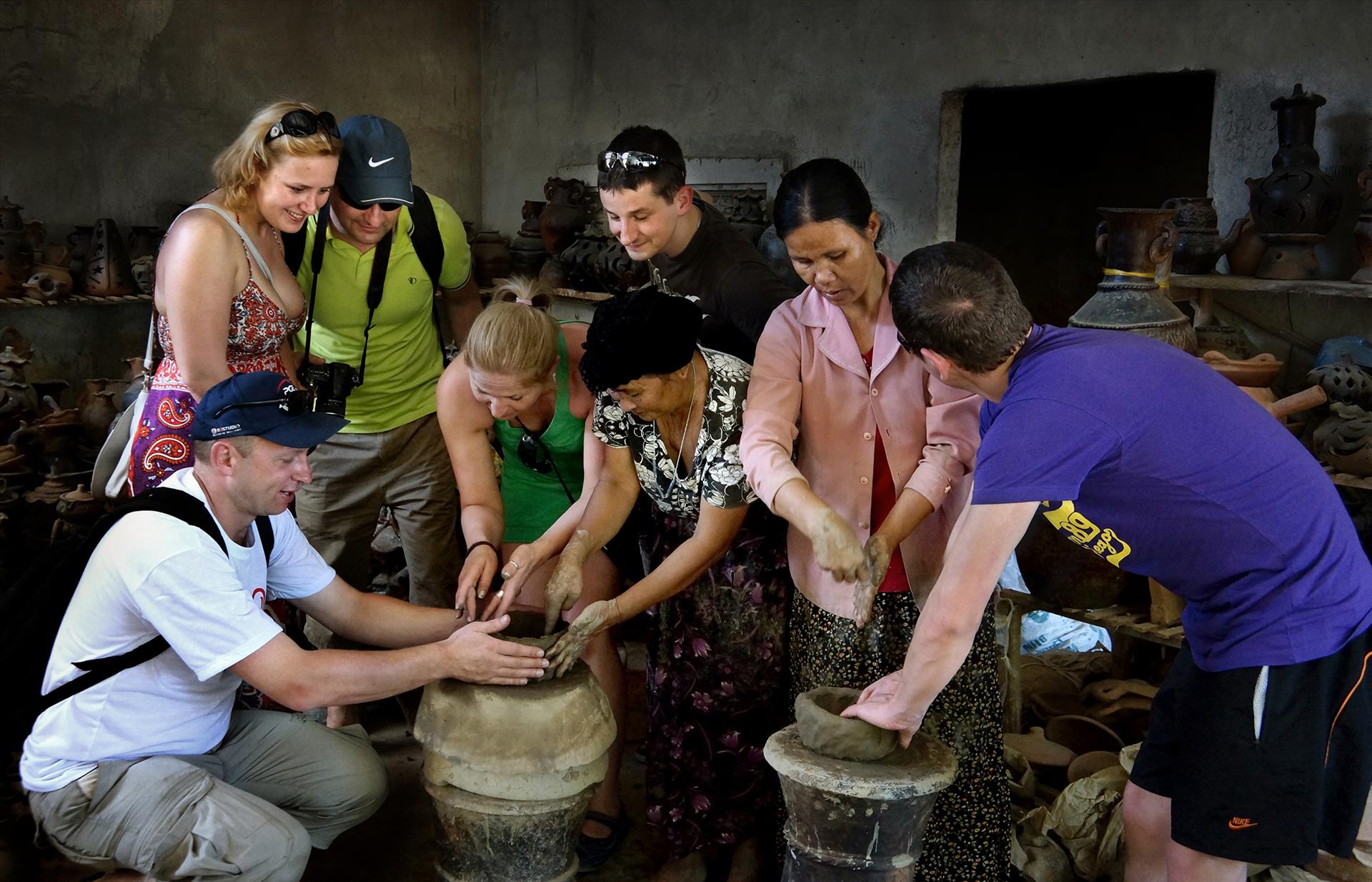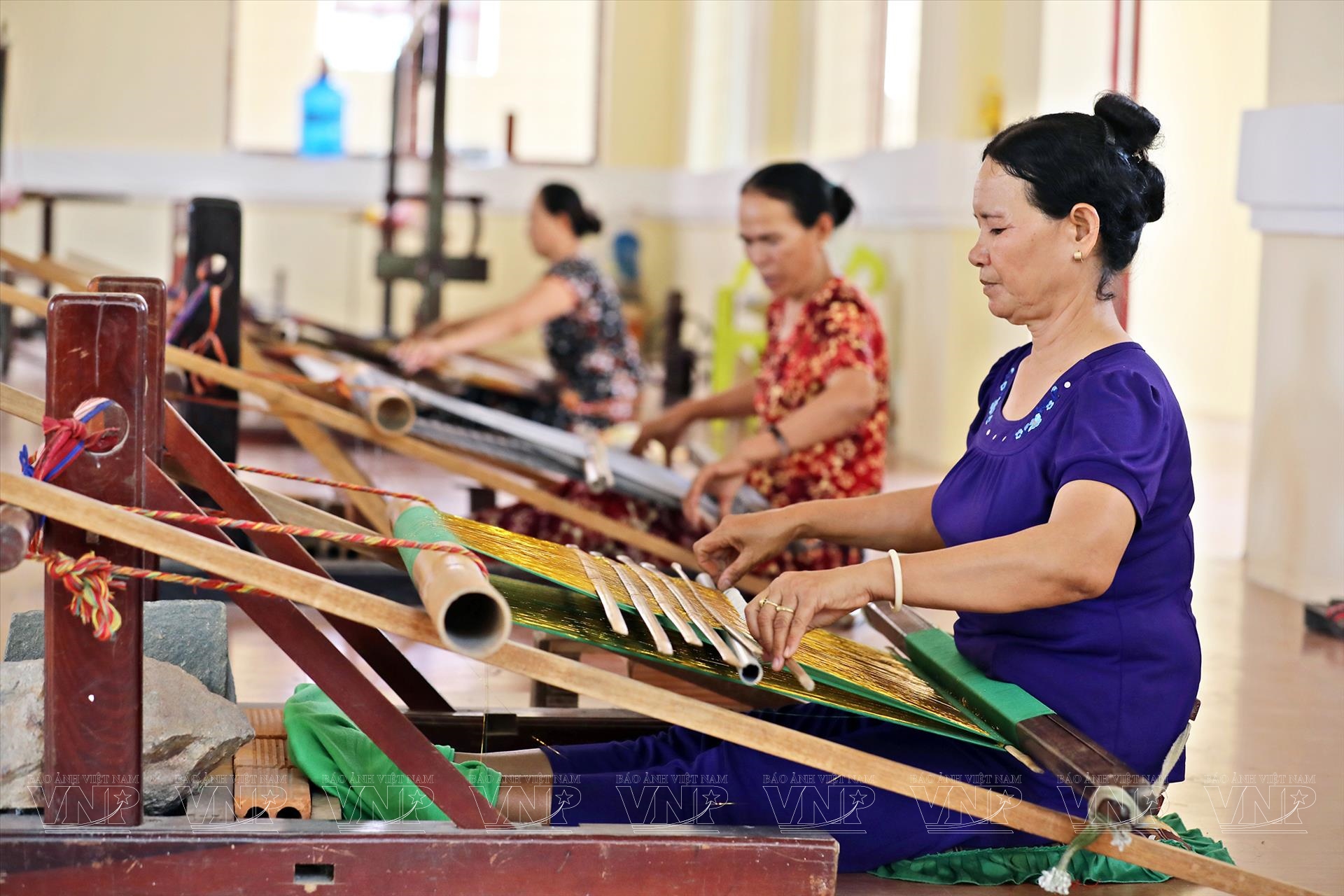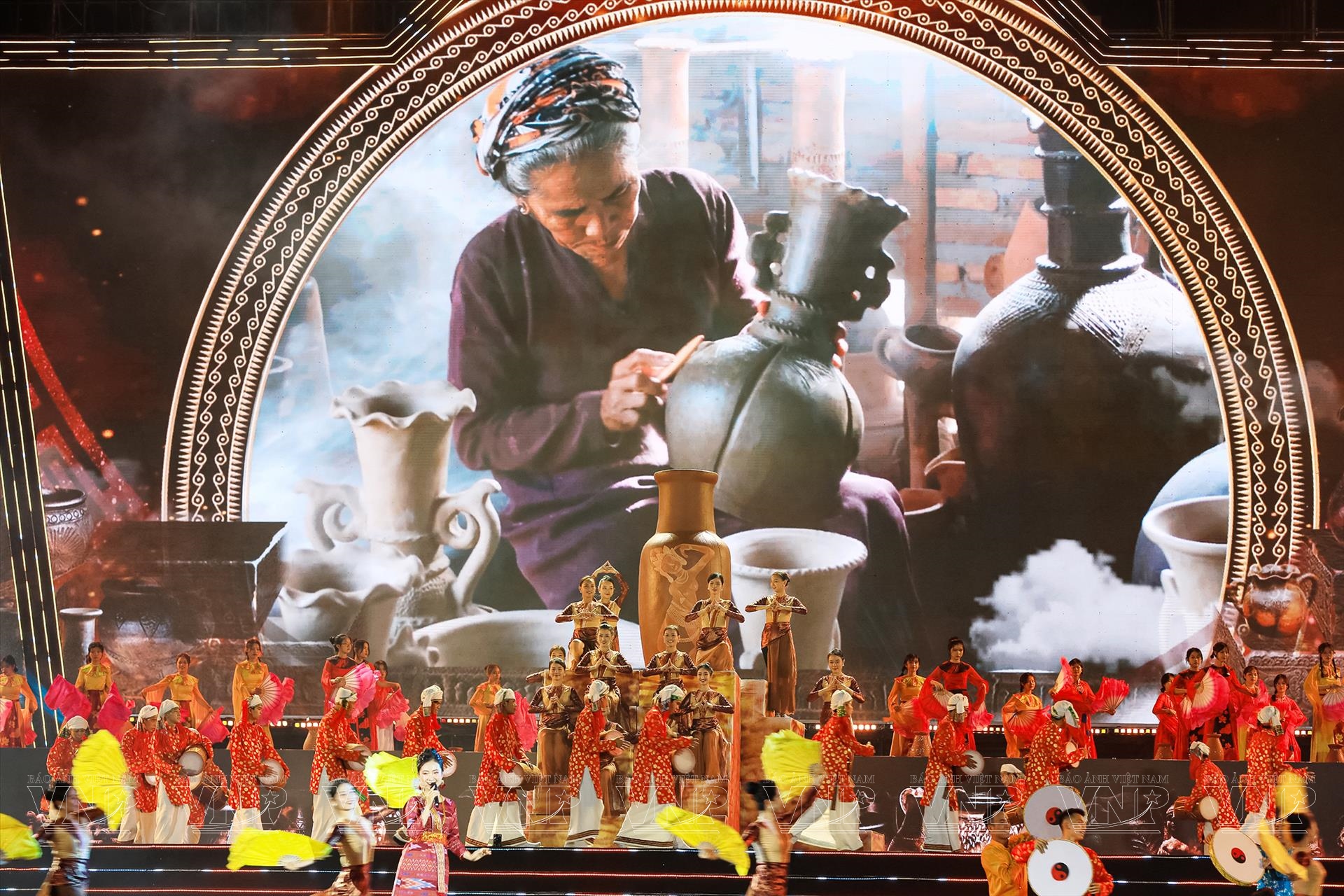Diverse and Rich Cultural Identity of the Cham
Cham culture is extremely rich in festivals, relics, and traditional crafts, including the art of pottery-making recognized by UNESCO as an intangible cultural heritage in need of urgent safeguarding, contributing to creating a multi-colored cultural picture of Vietnam’s 54 ethnic groups.
Traditional Festivals Rich in Cultural Identity of the Cham
During the year, the Cham have many traditional festivals, which are the Ramuwan festival, Kate festival, rain praying ceremony, Roya Phik Trok festival, Po Nagar festival, and the tower opening ceremony. The Ramuwan festival and Kate festival are the biggest cultural events of the Cham.
The Ramuwan festival is the most important one of the year. On this occasion, the Cham, no matter where they are and whatever the circumstances, try to return home to reunite with their families and pay tribute to their ancestors and pray for happiness, bumper crops, and peace.
The festival usually takes place in March or April and lasts for one month, beginning with a visit to their ancestors’ graves - the most important rite. On this day, members of Cham Bani families in their traditional costumes go to cemeteries to clean and decorate their ancestors’ graves and invite them back home to celebrate the festival. Offerings of the rite are quite simple, including betel and areca nuts, water and candies. Cham graves are differentiated from others because they are not built solidly, but only covered with sand at ground level and marked by a round rock. The graves are arranged in very unique long rows.
Besides the Ramuwan festival, the Kate festival is the oldest and most unique event of the Brahman Cham. The festival is celebrated annually on the first day of the seventh month of the Cham calendar (around October of the solar calendar) to pay respect to their gods and pray for favorable weather, productive crops, happy couples, and good fortune. It is observed in temples, villages and families in the province.
In Binh Thuan province, the home of the second largest Cham community in Vietnam (after Ninh Thuan province), the Po Sah Inu tower relic site (Phu Hai ward, Phan Thiet city) has been selected as the place for organizing the Kate festival for many consecutive years because it is not only a unique cultural, architectural, and religious address of the Cham but also a sightseeing spot, attracting a large number of tourists.
During the festival, many unique and typical rituals are performed at Po Sah Inu tower such as the ceremony of opening the tower, the grand ceremony, the Po Sah Inu Goddess’ costume carrying ceremony, the Linga-Yoni altar bathing rite and dressing up and worshipping Kate in front of the main tower. All are for giving thanks to the gods for favorable weather and bumper harvests, as well as to commemorate heroic martyrs, grandparents and ancestors. During the festival, the Cham also go to Po Sah Inu tower to pray for health, peace, luck, and prosperity.
The Kate festival is also an opportunity for the Cham to perform with traditional musical instruments, dance, and sing Cham folk songs. Young people participate in competitions of playing trumpets, performing in traditional costumes, wrapping cakes and pounding rice and decorating and displaying offerings.
There are also many activities held to promote Cham culture, such as pottery-making contests, weaving brocades, dancing and singing, folk games, sports exchanges, and displaying local food specialties. All create a colorful Kate festival, rich in cultural identities. The Kate festival not only meets the spiritual and emotional needs of the Cham people but has become a unique cultural and tourist event, attracting a large number of domestic and international visitors.
The Unique Art of Pottery-Making of the Cham
No one knows exactly when the pottery craft of the Cham people began, but it has existed for a long time and is still maintained by the Cham community in Binh Duc pottery village (formerly named Ligok village) in Phan Hiep commune, Bac Binh district, Binh Thuan province and Bau Truc pottery village (formerly named Hamu Crok village) in Phuoc Dan, Ninh Phuoc district, Ninh Thuan province.
The art of pottery-making of the Cham plays a great role in their economic, cultural and social lives. Pottery products are indispensable in the daily life and activities of each family and in the religious culture of the Cham community. Pottery making is considered a demonstration of Cham women’s creativity on the basis of their community’s knowledge.
The Bau Truc pottery village in Ninh Thuan Province is one of the oldest ceramic villages in Southeast Asia, dating back to the 12th century. The village’s households still maintain a completely rudimentary manual process that was used thousands of years ago.
On November 29, 2022, the art of pottery making of the Cham was included in the UNESCO list of intangible cultural heritage in need of urgent safeguarding. It is the 15th intangible cultural heritage of Vietnam to be named on the UNESCO list. The uniqueness of the pottery art in Bau Truc lies in technique. Instead of using turntables, Cham women revolve around the pieces of clay to shape objects. The products are not laid with enamel but dried and baked outdoors in wood and rice straw fires at about 800 degrees Celsius for five to seven hours. Raw materials (clay, sand, water, firewood, and straw) are collected locally, and the knowledge and skills are passed on to younger generations within families through hands-on practice.
Bau Truc pottery products are all molded by hand, so the products are often unique and no two are alike. Patterns on Bau Truc pottery are mostly rivers, trees, sky and earth and have religious content.
According to the traditional method, before firing pottery, the homeowner will select a good day and prepare some offerings to worship the pottery craft’s ancestors and gods to pray for their products to be fired successfully and not damaged. Bau Truc traditional pottery is diverse in types and styles, mainly household utensils, religious objects and fine artworks such as jars, pots, furnaces, vases, kettles and trays.
Despite its long history, pottery making is still at risk of being lost due to the urbanization impact, the slow adaptation to the market economy, and young people’s lack of interest in the craft. In response, the village’s artisans have begun creating new types of products with high aesthetic value, including decorative ones and souvenirs for tourists. The artisans have also improved the design and quality of products that combine characteristics of western and Vietnamese culture in Cham pottery to meet the different tastes of customers as well as in the service of tourism.
Talking about the long-term and sustainable direction to preserve and develop the pottery craft in Bau Truc, Phu Huu Minh Thuan, Chairman of Bau Truc Cham ceramic cooperative, said, "We are always researching, coming up with many new ideas and changing and improving designs to meet the market’s demands. We currently have over 10 thousand product types, including about 500 main designs. We pay much attention to investing in human resources, especially young labor, and have plans to cooperate with the tourism industry to develop the craft village and take advantage of the local potential”.
UNESCO’s recognition of the art of pottery making of the Cham as an intangible cultural heritage in need of urgent safeguarding is an affirmation of Vietnam's cultural identity as having some of the world’s important cultural heritage treasures and also shows respect for the role of women in modern society. From now on, this art will be a common asset of humanity.
According to the census data on population and housing, the Cham population in Vietnam is 178,948 people, residing mainly in the south-central and southern provinces such as Ninh Thuan, Binh Thuan, Dong Nai and An Giang. In 2022, the Kate festival of the Cham in Binh Thuan province was recognized as a National Intangible Cultural Heritage.
By Hong Hanh, Son Nghia
